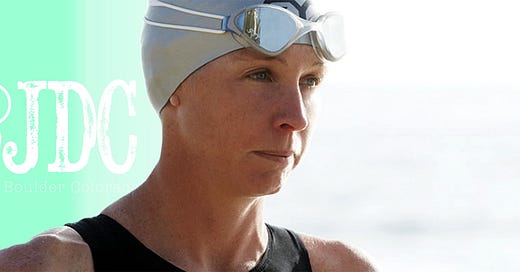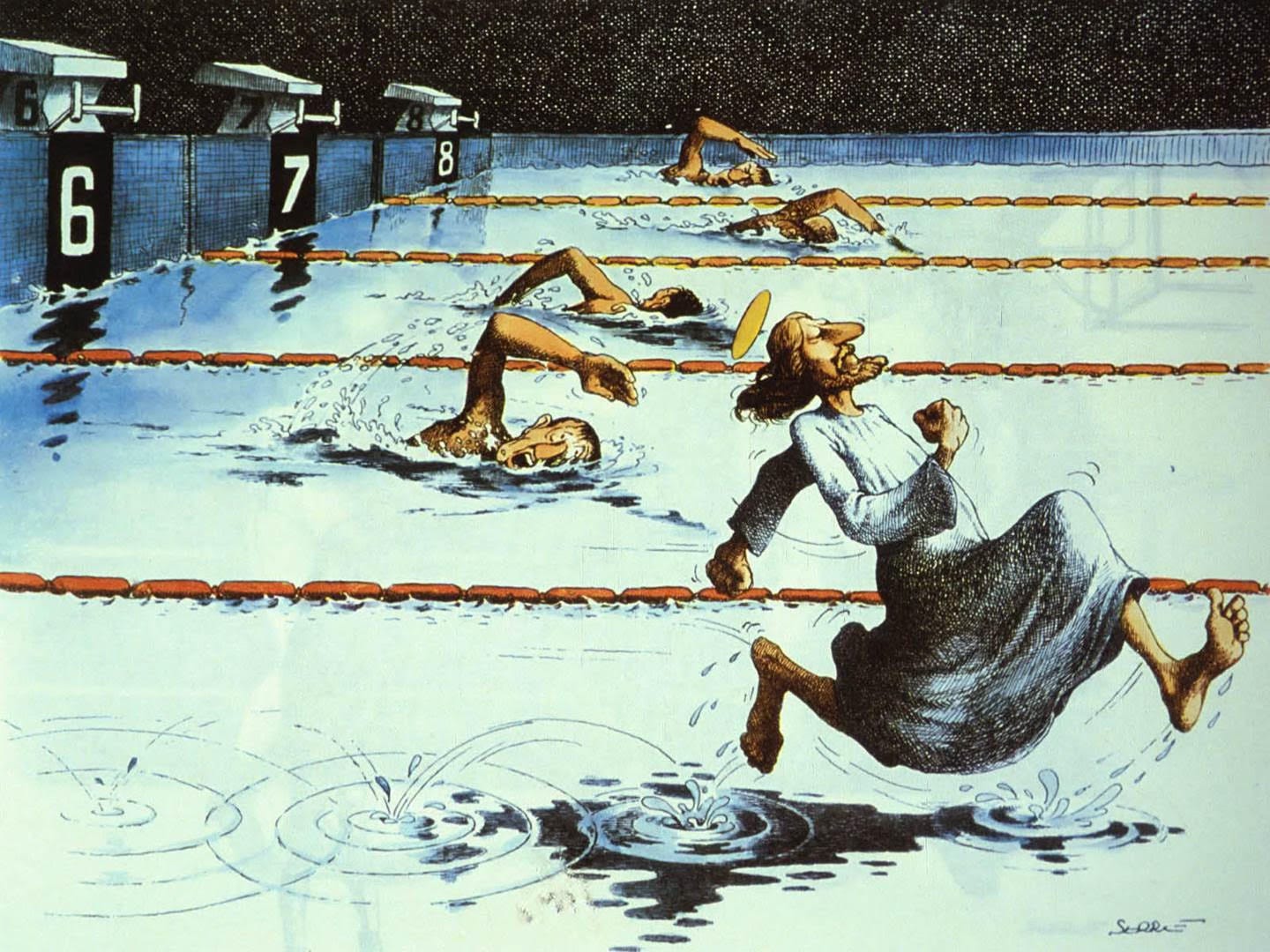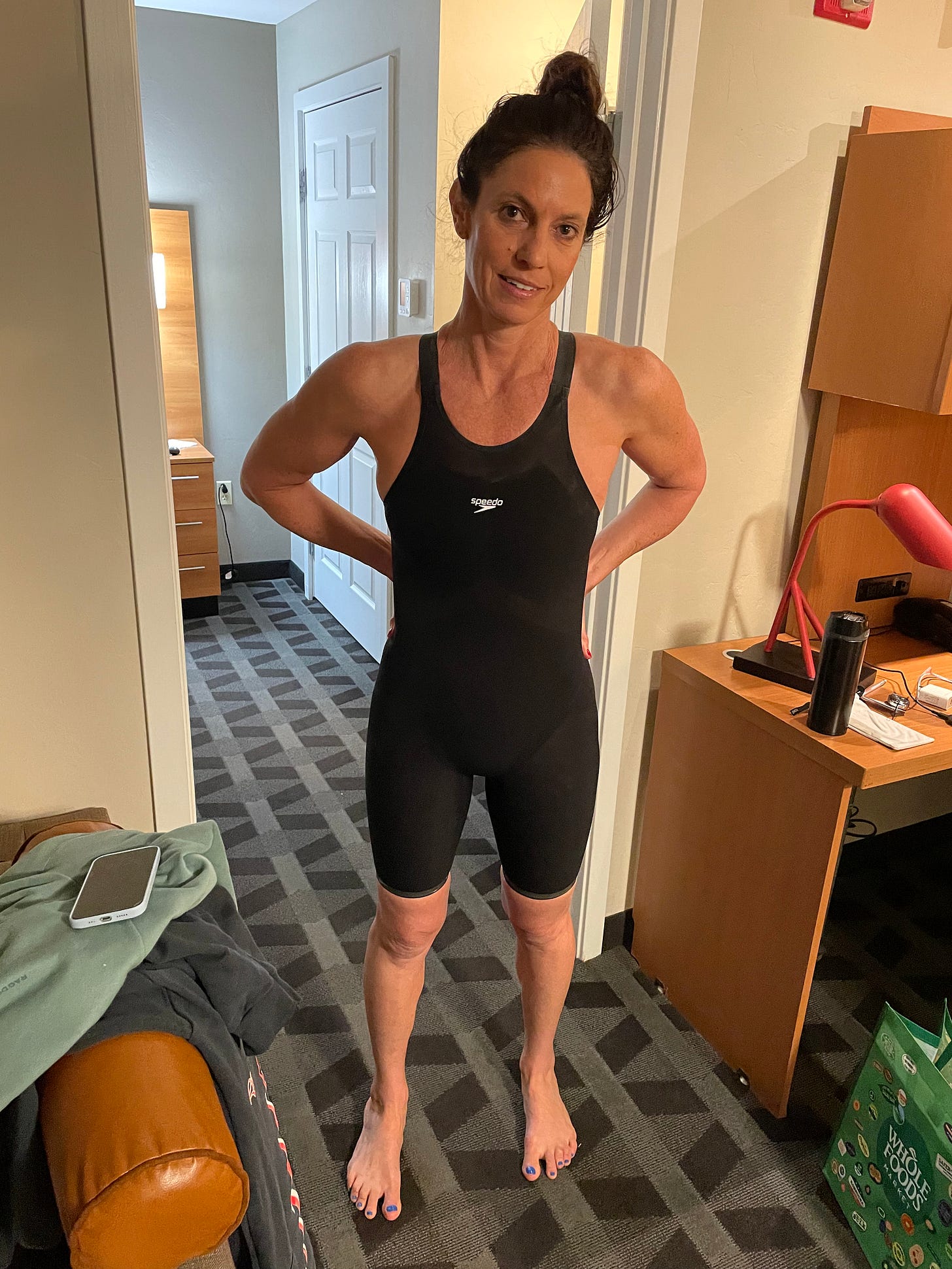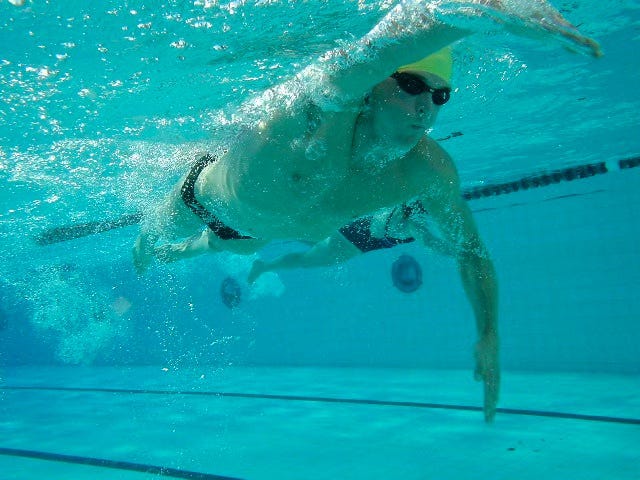Swimming Essentials
The purpose of this chapter is to help you enjoy the process of becoming a better swimmer.
We’re going to walk you through the developmental pathway of an adult swimmer. From their early days through to the top of the amateur ranks.
We’ve prepared modules with our favorite workouts.
Throughout, we will link to our favorite resources, especially video, to help you visualize what we explain.
What We Can’t Do
Swim for you. You’d be surprised by the number of athletes who don’t swim often and wonder why they aren’t improving.
Your job is to Touch The Water and ensure No Long Gaps in your swim program.
Evaluate your technique. We’re going to share the most common technical challenges facing swimmers.
Have someone film you swimming (head on, side on, swimming away) and look for areas of improvement.
Reach out to a local coach with experience helping athletes at your current level. Have them combine video with immediate feedback on your #1 area for improvement.
Change your technique. Change is uncomfortable and we often find comfort in our flaws. Swimming is a technique-intensive sport.
Swimming better requires gradual improvement over many years. This process never ends.
Get you to slow the **** down. Worldwide, you will find swimmers clueless about endurance pacing. These swimmers “work hard” while reinforcing suboptimal habits.
Below, we provide test sets to make it obvious if you are “over swimming” in training.
See the Benchmarking Your Swim section.
Know your paces, and send off intervals.
Once you know them, learn how to swim them evenly.
Our technique sets a hard ceiling on where our fitness can take us.
Every stroke we take is an opportunity to improve.
Easy, Not Sloppy
- Taylor Knibb, Olympian
Gordo’s Intro
My background is proof we can become a decent swimmers late in life.
I started swimming at 30 years old. Over the years that followed, I swam:
a sub-50 minute Ironman, and
a 20-minute 1500m (LCM, 50-meter pool).
Along the way, I won Ultraman Hawaii, a three-day multisport event that starts with a 10,000-meter open water swim.
I’ve asked two of my favorite swimmers to help us with this chapter.
Julie Dibens: Julie swam collegiately for Louisiana State University and went on to get a Masters Degree in Exercise Physiology. After college, she found great success on triathlon courses around the world as:
An Olympian for her home country of Great Britain
The 2009 Ironman 70.3 World Champion
A 3-time Xterra World Champion, and
A podium at the Ironman World Championship in Hawaii.
Monica Byrn: Monica swam collegiately for The University of Wisconsin (Madison). Like Julie, she saw greater success after college than during. During her triathlon career, she set swim course records around the world, several of which still stand.
Back when males and females raced together, Monica was one of the few females who could swim with the fastest men. She’s going to help us understand:
The pack dynamics of swimming in open water.
Specific sets to prepare for open water racing.
Getting Started
Most aspiring swimmers don’t last long enough to see improvement.
Too Much
Too Fast
Exhausting
At the first speed bump, they have an excuse to stop… and take it.
Keep reading with a 7-day free trial
Subscribe to Endurance Essentials to keep reading this post and get 7 days of free access to the full post archives.













